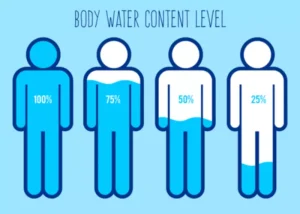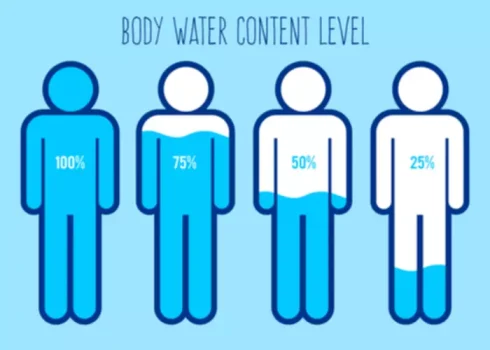
Additionally, individuals with previous withdrawal episodes are more likely to experience severe symptoms due to the kindling effect, which makes subsequent withdrawals progressively worse. Anxiety and tremors occur as the brain becomes overstimulated due to reduced GABA activity, leading to restlessness and involuntary shaking. Sweating, nausea, and an elevated heart rate result from the autonomic nervous system’s overactivation causing the body to respond as if under stress. Multiple dosing Drug rehabilitation strategies have been utilized in the management of AWS.

What are the risk factors for alcohol withdrawal?
For most people, alcohol withdrawal symptoms will begin sometime in the first eight hours after their final drink. A rare but very serious syndrome called delirium tremens can occur during alcohol withdrawal. Also known as DTs, an estimated 2% of people with alcohol use disorder and less than 1% of the general population experience them. Alcohol withdrawal refers to the symptoms that occur when a person who is dependent on alcohol suddenly stops or reduces their alcohol intake.
What Causes MDMA Withdrawal & Addiction?
- Someone experiencing more severe alcohol withdrawal may need to be closely monitored.
- The most notable way alcohol affects these neurotransmitters is by increasing the production of dopamine and serotonin, resulting in the familiar “feel-good” or “happy” feeling, which, over time, can lead to addictive behaviors.
- When alcohol is frequently misused, the brain must adapt and adjust to the influx of neurotransmitters created by chronic alcohol use.
- Older adults over 65 experience extended withdrawal due to slower metabolism and increased health risks.
- You could also feel paranoid, like others are lying to you or trying to hurt you.
- In the outpatient setting, mild alcohol withdrawal syndrome can be treated using a tapering regimen of either benzodiazepines or gabapentin administered with the assistance of a support person.
Volume overload is very common in the later stages of critical illness, and achieving a negative fluid balance is key to helping patients liberate from mechanical ventilation and ultimately recover. I outline strategies for minimizing ins (avoid MIVF, use high concentration drips, switch IV to PO) and maximizing outs (stepwise diuresis with loop diuretics, thiazides, spironolactone, and acetazolamide). I also discuss special circumstances including cirrhosis, nephrotic syndrome, and hypoalbuminemia. This ICU #OnePager reviews the d/dx (BATTLECAMP) and walks through an approach for workup, airway management, and interventions (bronchoscopic, IR, and surgical) to control hemorrhage. Tracheostomies are airways inserted directly into the trachea, that can facilitate weaning from mechanical ventilation and sedation. Tracheostomy can be performed at the bedside, particularly in patients where it may be difficult to transport to the OR (such as we often see in COVID19).
Unsupervised Medical Care

Approximately one-half of patients with alcohol use disorder who abruptly stop or reduce their alcohol use will develop signs or symptoms of alcohol withdrawal syndrome. The syndrome is due to overactivity of the central and autonomic nervous systems, leading to tremors, insomnia, nausea and vomiting, hallucinations, anxiety, and agitation. If untreated or inadequately treated, withdrawal can progress to generalized tonic-clonic seizures, delirium tremens, and death. The three-question Alcohol Use Disorders Identification Test–Consumption and the Single Alcohol Screening Question instrument have the best accuracy for assessing unhealthy alcohol use in adults 18 years and older.
But unlike delirium tremens, you are aware that you’re alcohol withdrawal syndrome symptoms hallucinating. You’ll visit your doctor or a center during the day, returning home each night. Many times these plans combine therapy, medication, and follow-up visits.

The medications used for alcohol withdrawal are benzodiazepines, barbiturates, and beta-blockers. Benzodiazepines like diazepam and lorazepam are used to enhance GABA activity to reduce anxiety, tremors, and seizures. Ways to treat alcohol withdrawal include medical detox, partial hospitalization programs, and intensive outpatient programs, based on symptom severity. Typically, most people who finish alcohol withdrawal make a full recovery. Still, certain symptoms may last for months while the brain and central nervous system recalibrate and recover from alcohol addiction, including insomnia, mood swings, and fatigue.
- This article discusses alcohol withdrawal, its symptoms, and potential complications.
- A summary of relevant markers in the emergency setting is given in Table 3.
- Comprehensive patient care entails acute management and outpatient support in the hospital setting.
For now, it may be easier to skip meeting your “drinking buddies” and avoid gatherings that have a focus on drinking. Anti-seizure drugs such as gabapentin and carbamazepine can help reduce your craving for more alcohol. Studies show that gabapentin can also help improve your sleep and mood, which may make you less likely to relapse.
- When not properly treated, AWS can progress to delirium tremens (Table 38–10).
- That way, they can help you manage the discomfort and respond quickly in case of a medical emergency.
- Alcohol withdrawal may range from a mild and uncomfortable disorder to a serious, life-threatening condition.
- Life-threatening complications such as delirium tremens (DTs), occur due to excessive nervous system hyperactivity following alcohol cessation.
Most people with mild to moderate alcohol withdrawal don’t need treatment in a hospital. But severe or complicated alcohol withdrawal can result in lengthy hospital stays and even time in the intensive care unit (ICU). Healthcare providers typically prescribe short-term medications to relieve the symptoms of mild to moderate alcohol withdrawal. Alcohol withdrawal causes a range of symptoms when a person with alcohol use disorder stops or significantly decreases their alcohol intake.
Comprehensive patient care entails acute management and outpatient support in the hospital setting. In the inpatient setting, nurses perform frequent assessments that inform the treatment plan. Yes, alcohol withdrawal is prevented through medical interventions and gradual alcohol reduction strategies. The most effective approach is medically supervised detoxification, which involves tapering alcohol intake or using medications such as benzodiazepines to manage withdrawal symptoms safely. This allows the brain and body to adjust without extreme neurochemical imbalances.
Leave a Reply